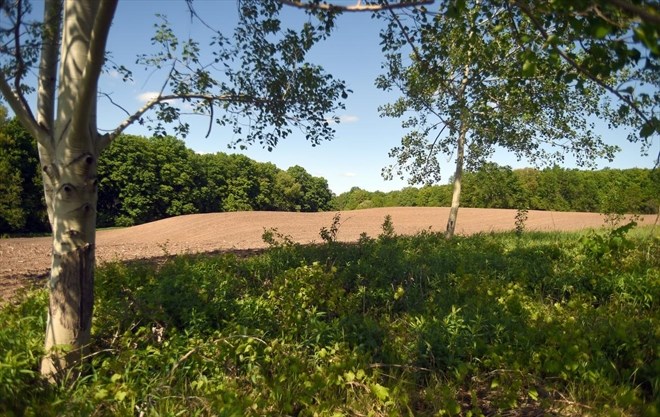The plan would create an ‘urban corridor’ with zoning for medium-rise mixed use development of up to eight storeys, and some highrise and commercial development along River Road near Wabanaki.
City plans to update land use in the environmentally sensitive Hidden Valley area would add hundreds of jobs and more than quadruple the number of people living there, according to a new report.
Next Monday, city council will consider a new master plan mapping out future development of the area. The plan call for “a balanced approach” that protects unique environmental features, but sees much more intense development along an “urban corridor” in the form of a new River Road regional road extension.
“Hidden Valley is a unique and beautiful area of Kitchener,” the report acknowledges.
It has several important environmental features including glacial eskers, provincially significant wetlands, large woodlands, rare animals and plants, significant wildlife habitat, source water protection areas and steep slopes along the Grand River. The new land-use plan would be subject to an environmental impact study.
The area — tucked between the Grand River, Highway 8, Wabanaki Drive and the rail corridor near Fairway Road — is 183 hectares with an almost rural feel. There are rolling hills covered with hardwood, estate lots near the river and farm fields. Many of the older homes still rely on well-water and septic systems.
But it’s also clear that the Region of Waterloo and city expect some development to come to the area, as work begins on a long-planned road that skirts the valley and extends across the highway. That River Road extension will be a regional arterial road and is expected to be finished in 2024.
The master plan would more than quadruple the population of the area from about 360 today to about 1,500 over the next several years, and will add an expected 600-700 jobs. It would also preserve about 45 per cent of the area — 87 hectares — as protected environmental land.
“There’s definitely a fairly big disparity and differences of opinion about what the future of the area holds,” said Brandon Sloan, Kitchener’s manager of long-range and policy planning.
Existing residents want their neighbourhood’s character preserved. Environmentalists worry that approving development in Hidden Valley will eliminate a major opportunity to preserve an exceptional area as green space the whole city can enjoy.
The city’s plan is built around five principles: respecting existing neighbourhoods; protecting the environmental features; ensuring any new development is sustainable; new development has mixed uses along the new road; and that new development is a more “complete” community, with a range of transportation choices and land uses, including homes, shops and workplaces.
The plan would create an “urban corridor” with zoning for medium-rise mixed use development of up to eight storeys, and some highrise and commercial development along River Road near Wabanaki.
The city wants a comprehensive plan that addresses the whole area, rather than reacting to individual development proposals as they come up, Sloan said.
Environmentalists argue that the city has a key decision to make that could affect the city’s livability for decades. “We feel really strongly that there’s one chance and one chance only here,” said Gordon Nicholls, who has been defending Hidden Valley for years.
With as many as 50,000 more people moving into new developments along the light rail corridor over the next several years, “there’s a real shortage of parkland and green space,” Nicholls said. “This is the only green space left. We’ve got all kinds of development coming along King Street. Let’s make sure in addition to all that development we also provide a space that’s for people.”
If council approves the plan, next steps would be a formal planning amendment, and carrying out engineering and technical studies that will guide future development. Development wouldn’t go ahead until there’s a new River Road extension, servicing and new zoning. “All that could take several years,” Sloan said.

